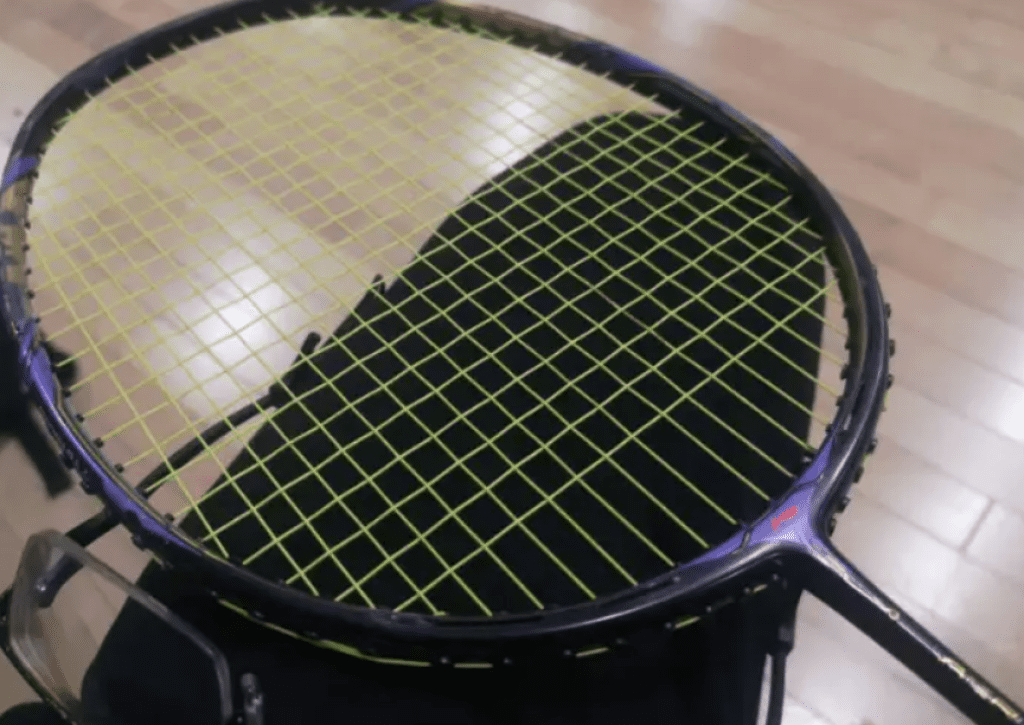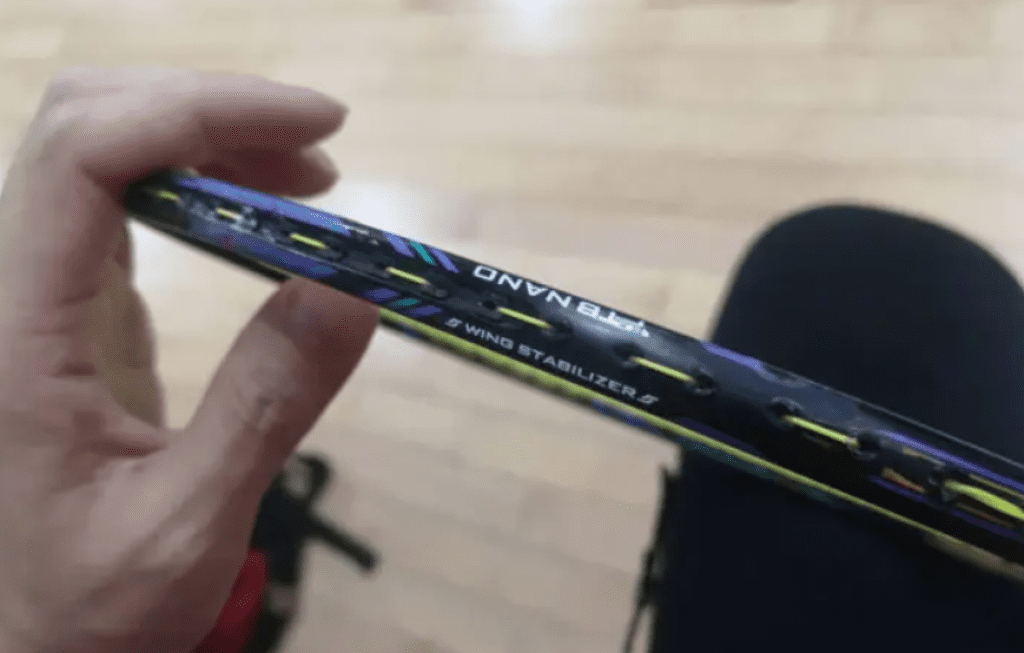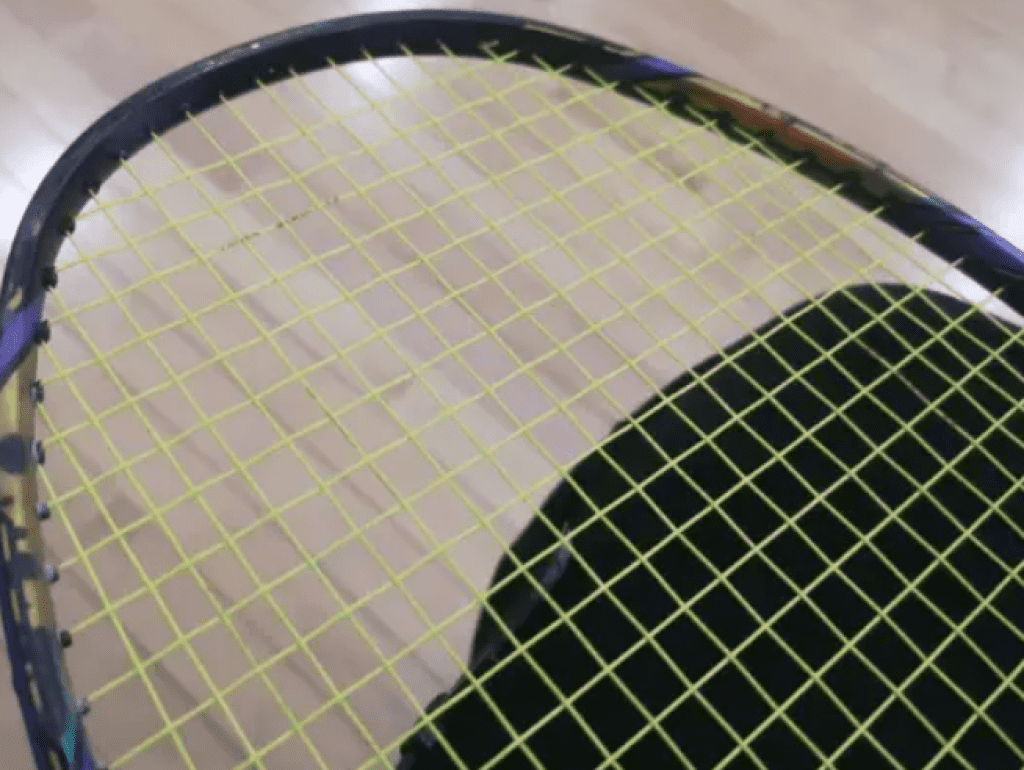Didn’t I mention that I’ve already tried out the flagship rackets from the three major brands last year? The only one left from the “red” brand is their former flagship, which I haven’t gotten around to yet. I doubt many readers would have guessed that it’s the AERONAUT 9000I.
The reason I’ve delayed writing about it for so long is simple: I didn’t know how to describe it. The “red” brand has always been rather obsessive when it comes to making 5U rackets, especially when the idea of balancing offensive power becomes so prominent. This often requires an extremely high balance point and the best shaft available at the time, which can lead to poor overall coordination of the racket.
While the AERONAUT 900I from a different series gave me a great experience, the 9000I did not.

Specifications:
5UG6, factory grip, total weight in use is 89.91g, balance point is 320mm, shaft length is 210mm, medium stiffness, box frame, 72-hole string bed, full groove, 30 lbs tension warranty, strung with XB63 at 25-27 lbs.
This racket has been on the market for quite some time, and as it garnered widespread comments labeling it as a “hammer,” the AERONAUT 9000I increasingly resembled the two hammers of the mythical figure, Leizhenzi. The black base coat and purple-green stickers have become its hallmark. Of course, as a flagship model, it boasts many refined details, including embellishments along the outer edge of the frame, decorations on the inner side, a matte finish, gold lettering, and the bright red Li-Ning logo at the T-joint, which adds a touch of mysterious prestige to the racket. Is it visually appealing? At the very least, it’s a racket that sticks in people’s minds—a specialty of the “red” brand. But trust me, the more stickers there are, the more likely they are to develop imperfections.

Although many people say that the head-heavy 5U setup is overly stubborn, to me, after experiencing rackets like the AERONAUT 900I, Dragon Tooth, and VTFB, it doesn’t seem that strange anymore. The shaft is slightly stiffer, and the head heaviness is moderate to high, resulting in a noticeable feeling of power transfer. The feedback from the racket upon hitting is quite “solid,” with a certain sense of power. Under this setup, the shaft’s responsiveness is still apparent, allowing for some elasticity, and for basic clears, many players might find it adaptable.
The key issue is how much offensive advantage this setup provides and to what extent it balances speed and maneuverability.

Let’s start with the latter. The oversized swing weight means it requires more backswing space when making strokes with just the forearm and fingers, which puts it at a disadvantage in extended rallies, especially during flat exchanges in doubles. I’m still puzzled as to how Yuta Watanabe managed to achieve results with the 9000I. Although the racket itself is relatively light and the swing speed in the latter part of the stroke isn’t slow, I found that before fully adapting to its quirks, I would occasionally miss or frame the shuttle when I needed to react quickly to intercept or block my opponent’s shots.
Moreover, during the complete swing motion, the 9000I tends to have a “runaway” feeling during deceleration, with a noticeable wobble at the frame when trying to stop the racket. This negatively affects continuity. Fortunately, the 210mm long handle allows for an adjusted grip position to mitigate this issue.
Now, let’s talk about the former. The downward pressure of the racket is perfectly fine. When you take the shuttle at a high point and hit, you can clearly feel the frame wrapping around the shuttlecock and smashing it downward, producing a trajectory that is low and sharp. This makes the 9000I incredibly effective for controlled smashes and slices, but in terms of raw offensive power, the lightweight disadvantage is not easily offset by the high-mass frame. When the opportunity to fully exert force arises, it still feels like the energy is insufficient, and it’s challenging to penetrate the opponent’s defense fully.

That said, using the 9000I to maintain downward pressure doesn’t require much effort to produce a decent suppressive shot, which I find quite beneficial. It allows for more energy-saving play, as long as you have the patience to keep up.
The racket excels in providing a solid feel for control. Due to its relatively heavy feel for a 5U racket, it offers a firmer touch than many 4U rackets, contributing to very stable shot quality during net play. In the backcourt, drops and slices continue to benefit from the good characteristics of its downward shots, with sufficient margin for error and often high-quality, close net shots.
As for handling defensive and passive shots, although this is an extreme racket, its performance in these areas is quite average—neither particularly good nor bad.
Initially, the prevalence of counterfeit versions of this racket made me hesitant to try it out, and it also poses a significant risk for those interested in purchasing the AERONAUT 9000I.
Moreover, I personally find the AERONAUT 9000 to be much better. As mentioned above, what feature does the 9000I have that the 9000 doesn’t? I really don’t understand the rationale behind cramming tasks that a 3U racket naturally handles well into a 5U frame. Didn’t they consider that players who can’t manage a 3U racket might not be able to fully utilize the potential of this 5U racket either?

Leave a Reply